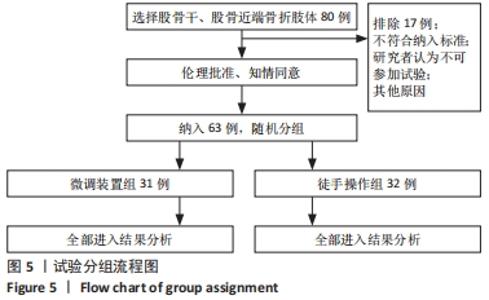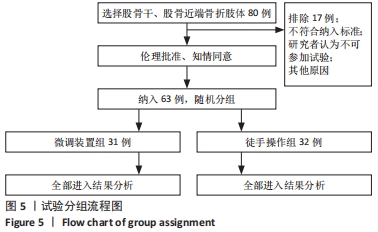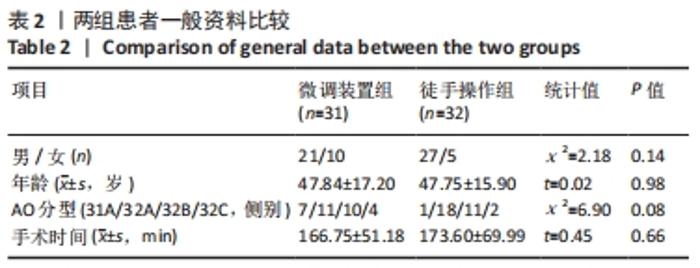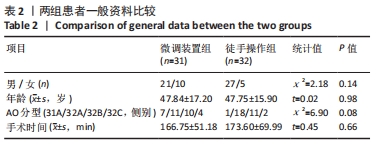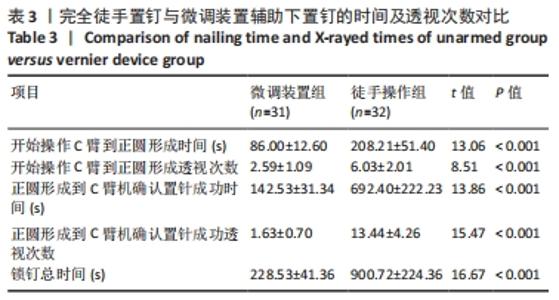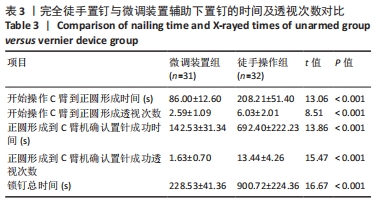[1] Jankovic A, Korac Z, Bozic NB, et al. Influence of knee flexion and atraumatic mobilisation of infrapatellar fat pad on incidence and severity of anterior knee pain after tibial nailing. Injury. 2013;44 Suppl 3:S33-39.
[2] DÉJARDIN LM, PERRY KL, VON PFEIL DJF, et al. Interlocking Nails and Minimally Invasive Osteosynthesis. Vet Clin North Am Small Anim Pract. 2020;50(1):67-100.
[3] CAUBERE A, DEMOURES T, CHOUFANI C, et al. Use of intramedullary nailing in poor sanitary conditions: French Military Medical Service experience. Orthop Traumatol Surg Res. 2019;105(1):173-177.
[4] WU KJ, LI SH, YEH KT, et al. The risk factors of nonunion after intramedullary nailing fixation of femur shaft fracture in middle age patients. Medicine (Baltimore). 2019;98(29):e16559.
[5] OCALAN E, USTUN CC, AKTUGLU K. Locking plate fixation versus antegrade intramedullary nailing for the treatment of extra-articular distal femoral fractures. Injury. 2019;50 Suppl 3:55-62.
[6] ADESINA SA, EYESAN SU, IKEM IC, et al. Radiation-free interlocking intramedullary nailing of three-hundred and seventy long bone fractures in Ogbomoso, Nigeria. Sci Rep. 2021;11(1):10070.
[7] WILSON NM, MOEN MT, SHAW JT, et al. Clinical and radiographic outcomes following retrograde SIGN fin nailing for femoral shaft fractures. OTA Int. 2020;3(3):e086.
[8] BIRNER ZH, HETZEL SJ, WILSON NM, et al. Radiographic outcomes of femur fractures following SIGN Fin nailing in low- and middle-income countries. OTA Int. 2021;4(3):e141.
[9] AREU MMM, VON KAEPPLER EP, MADISON BB, et al. Fixation of intertrochanteric femur fractures using the SIGN intramedullary nail augmented by a lateral plate in a resource-limited setting without intraoperative fluoroscopy: assessment of functional outcomes at one-year follow-up at Juba Teaching Hospital. OTA Int. 2021;4(3):e133.
[10] 张华良,靳云乔.髓内钉不同进针点对胫骨干中上段骨折闭合复位的影响[J].河北医科大学学报,2014,35(5):606-607.
[11] WHATLING GM, NOKES LD. Literature review of current techniques for the insertion of distal screws into intramedullary locking nails. Injury. 2006;37(2):109-119.
[12] ACKER JH, MURPHY C, D’AMBROSIA R. Treatment of fractures of the femur with the Grosse-Kempf rod. Orthopedics. 1985;8:1393-1401.
[13] SONI RK, MEHTA SM, AWASTHI B, et al. Radiation-free Insertion of Distal Interlocking Screw in Tibial and Femur Nailing: A Simple Technique. J Surg Tech Case Rep. 2012;4(1):15-18.
[14] FINELLI CA, ZIRAN BH, TORINI AP, et al. Interlocking screws placed with freehand technique and uni-planar image intensification: the “dip-stick” technique. Injury. 2014;45(suppl 5):S21-25.
[15] 肖斌,廖凡琼,郭新辉,等.股骨交锁髓钉瞄准器术中变形移位原因及对策[J].实用骨科杂志,2008,14(8):490-492.
[16] 雷安,陈芙蓉,张志伟,等.股骨带锁髓内钉远端锁钉操作技巧及体会[J].实用骨科杂志,2006,12(1):69.
[17] HAN B, SHI Z, FU Y, et al. Comparison of free-hand fluoroscopic guidance and electromagnetic navigation in distal locking of femoral intramedullary nails. Medicine (Baltimore). 2017;96(29):e7450.
[18] WANG Y, HAN B, SHI Z, et al. Comparison of free-hand fluoroscopic guidance and electromagnetic navigation in distal locking of tibia intramedullary nails. Medicine (Baltimore). 2018;97(27):e11305.
[19] ZHU Y, CHANG H, YU Y, et al. Meta-analysis suggests that the electromagnetic technique is better than the free-hand method for the distal locking during intramedullary nailing procedures. Int Orthop. 2017;41(5):1041-1048.
[20] GRIMWOOD D, HARVEY-LLOYD J. Reducing intraoperative duration and ionising radiation exposure during the insertion of distal locking screws of intramedullary nails: a small-scale study comparing the current fluoroscopic method against radiation-free, electromagnetic navigation. Eur J Orthop Surg Traumatol. 2016;26(8):867-876.
[21] GARDNER MJ, CITAK M, KENDOFF D. Femoral fracture malrotation caused by freehand versus navigated distal interlocking. Injury. 2008; 39(2):176-180.
[22] 王臣,肖万军. Sureshot 远端瞄准系统进行股骨髓内钉远端锁钉操作的临床应用价值分析[J].创伤外科杂志,2017,19(8):578-582.
[23] YUAN H, ACKLIN Y, VARGA P, et al. A cadaveric biomechanical study comparing the ease of femoral nail insertion: 1.0- vs 1.5-m bow designs. Arch Orthop Trauma Surg. 2017;137(5):663-671.
[24] DANER WE III, OWEN JR, WAYNE JS, et al. Biomechanical evaluation of the risk of secondary fracture around short versus long cephalomedullary nails. Eur J Orthop Surg Traumatol. 2017;27(8):1103-1108.
[25] 陈立军,庞清江,余霄,等.股骨交锁髓内钉远端锁钉体外透视定位器的研制及临床应用[J].中国矫形外科杂志,2018,26(8):757-761.
[26] LI YM, XING BR, GUO DH, et al. [Application of self-made fine-tuning device in distal locking process of femoral interlocking intramedullary nail]. Zhongguo Gu Shang. 2019;32(2):161-165.
[27] HSU WE, YU CH, CHANG CJ, et al. Implementation and performance evaluation of a drilling assistive device for distal locking of intramedullary nails. Int J Med Robot. 2020;16(4):e2110.
[28] 宋俊杰. C臂正位圆孔压杆技术与徒手技术在股骨髓内钉远端锁定螺钉的比较性研究[D].太原:山西医科大学,2016.
[29] 刘晓强,王洪伟,李铠湘,等.无 X 线暴露下股骨交锁髓内钉远端锁钉置入的新方法[J].中国骨与关节损伤杂志,2016,31(12):1307-1308.
[30] YIANNAKOPOULOS CK, KANELLOPOULOS AD, APOSTOLOU C, et al. Distal intramedullary nail interlocking: the flag and grid technique. J orthop Trauma. 2005;19(6):410-414.
[31] MORTAZAVI J, FARAHMAND F, BEHZADIPOUR S, et al. A patient specific finite element simulation of intramedullary nailing to predict the displacement of the distal locking hole. Med Eng Phys. 2018;55:34-42.
[32] MALEKI M, TEHRANI AF, ARAY A, et al. Intramedullary nail holes laser indicator, a non-invasive technique for interlocking of intramedullary nails. Sci Rep. 2021;11(1):21166.
[33] GAO H, LIU Z, WANG G, et al. A New Accurate, Simple and Less Radiation Exposure Device for Distal Locking of Femoral Intramedullary Nails. Int J Gen Med. 2021;14:4145-4153.
[34] WEIDERT S, WANG L, LANDES J, et al. Video-augmented fluoroscopy for distal interlocking of intramedullary nails decreased radiation exposure and surgical time in a bovine cadaveric setting. Int J Med Robot. 2019; 15(4):e1995.
|
